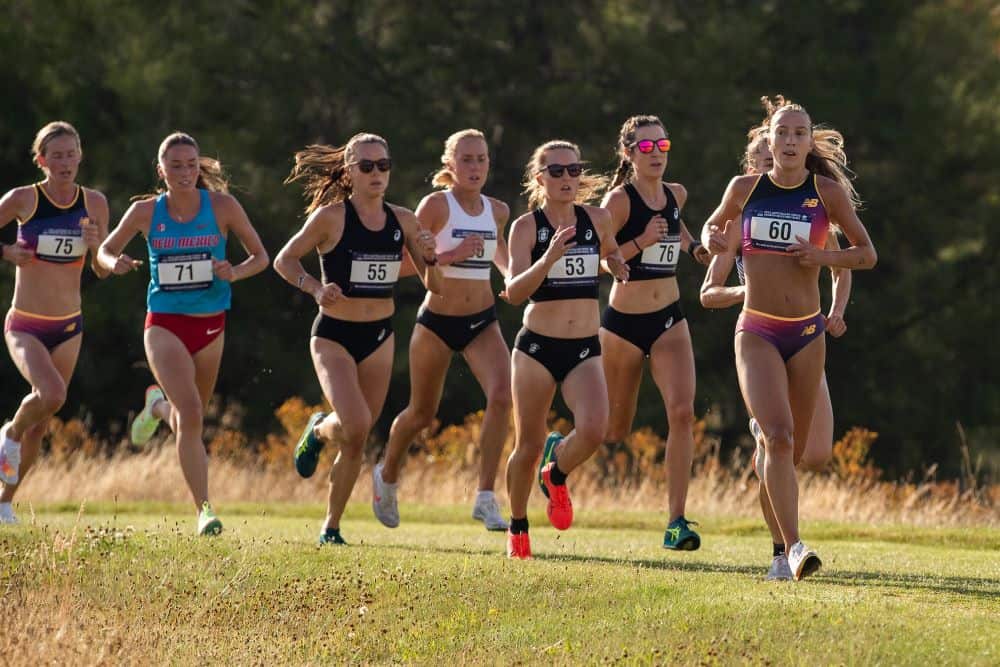Cross-country is a grass roots discipline. True – given that almost every kid around the world has been introduced to the sport via their primary school’s sports day. And if that’s not grass roots, I don’t know what is.
It’s also true in the physical sense, because cross-country is conducted almost entirely over natural surfaces from manicured parks and golf courses to the plough, mud and creek crossings beloved of certain English ‘traditionalists’. I write “almost entirely” to allow for notable exceptions like the famous Cinque Mulini race which includes wooden bridges, stony farm-yards and detours through family living areas.
Cross-country – the Australian version anyway – clings to tradition in one other feature. It is the climax of a series of races, contested along club lines, constituting a structured winter season. Beginning in autumnal sunshine, slogging its way through the rain, cold and occasional sleet that passes for wintry weather in the balmy southern hemisphere and finishing as we turn into spring.
When your correspondent first became involved with this sport, the summer season was largely of the same structure. You ran for your club on the weekends, starting in November, finishing in February, then your state championships and, if you were good enough, the nationals.
This writer never made national championships level on the track. Nor, despite eventually running 2:19, did I contest the national marathon championships. Only at cross-country did I attain national championship level, further explanation for my abiding love of cross-country.
Probably beginning in the 1980s with the development of separate pathways for talented athletes – a national institute of sport, followed soon after by state institutes – the continuity between club, state, national and international competition was ruptured. Now it’s possible to go from talented schoolkid to the Olympics without ever joining a club. The last international athlete I can recall regularly running Victorian interclub is Tamsyn Manou (with apologies to the few others I have missed).
Some of the same factors have diminished the Australian winter season, too, albeit not to the same degree. It’s true that more middle and long-distance athletes now travel to Asia, the USA or Europe for all or part of the northern hemisphere season, missing the national championship, but it’s equally true that many of them do part of the cross-country season in the build-up.
Cross-country was always part of Steve Moneghetti’s build-up. Likewise Kerryn McCann. Craig Mottram, Lee Troop (in both his track distance and marathon phases), Margaret Crowley all turned out in Victorian winter races during their peak years. I also recall Ryan Gregson running a NSW 12km cross-country as his last hit-out before heading off to race over 1500 metres in Europe.

And in the even more immediate past Linden Hall, Abbey Caldwell, Brett Robinson, Stewart McSweyn, Jack Rayner and Andy Buchanan are among those to have run the Victorian cross-country relays and other early-winter races before heading overseas chasing track glory. Buchanan was actually ‘plucked’ out of the Victorian winter season as a late addition to replace Robinson in the Paris Olympic marathon. Didn’t seem to harm his performance.
Although there are a couple of events yet to complete the Victorian season, the climax of the winter season comes with the national championships in Ballarat this weekend (23-24 August). Ballarat and the surrounding region have hosted three of the eight state winter titles so far this year – the 10 and 12km cross-countries and the 15km road – plus the Australian road mile championships in conjunction with the Ballarat marathon back in late April.
An area capable of turning on some extremes of winter weather – it actually snowed during an 8km cross-country back in the pre-2000 days, a race staged, if memory serves, in the park which will host the nationals – Ballarat has turned on mostly fine conditions through this winter. The forecast for the weekend is relatively benign, thank goodness.
World cross-country representative Ed Marks could be excused for thinking he is under a nationals curse. Last year in Launceston he lost narrowly to Seth O’Donnell after looking to have gained the upper hand in the closing stages. This year he has dominated the Victorian season only to be put out by a leg injury.
It’s worth documenting Marks’ season to date. He did not contest the 8km cross-country, the first of the winter, nor the most recent, the 15km road, but his card reads 12km cross-country – first; cross-country relays – fastest leg; 5km road – first; road relays – fastest; 10km cross-country and 10km road – first in both.
His absence throws the race wide open. In an open field, Marks’ 2024 world cross-country teammates Andre Waring and Zach Facioni and Aiden Velten, runner-up in the Victorian 10km cross-country are among the strongest contenders.
View this post on Instagram
The women’s race is even harder to pick with recent City to Surf winner Bronte Oates having a break-through season, 2022 champion Georgia Hansen, Olympic representative Jenny Blundell and last year’s runner-up (to Leanne Pompeani) Ruby Smee among the top chances.
View this post on Instagram
For your columnist it’s spectating again, hopefully via a walk around the course (no chance I’ll be mistaken for a participant). Spectating at cross-country races, just like running them, brings a vast array of conditions. At world cross-countries I’ve experienced bright sunshine at Auckland’s Ellerslie Racecourse in 1988, ankle-deep mud all over the course at Stavanger the following year, typhoon-like winds in Fukuoka in 2006 and the daddy of them all, heat, dust and a fierce storm in Bathurst two years ago. Bit hard to appreciate the grass roots when they’re being blown past you at terrifying speed.
The variety of cross-country, however, never fails to delight.
